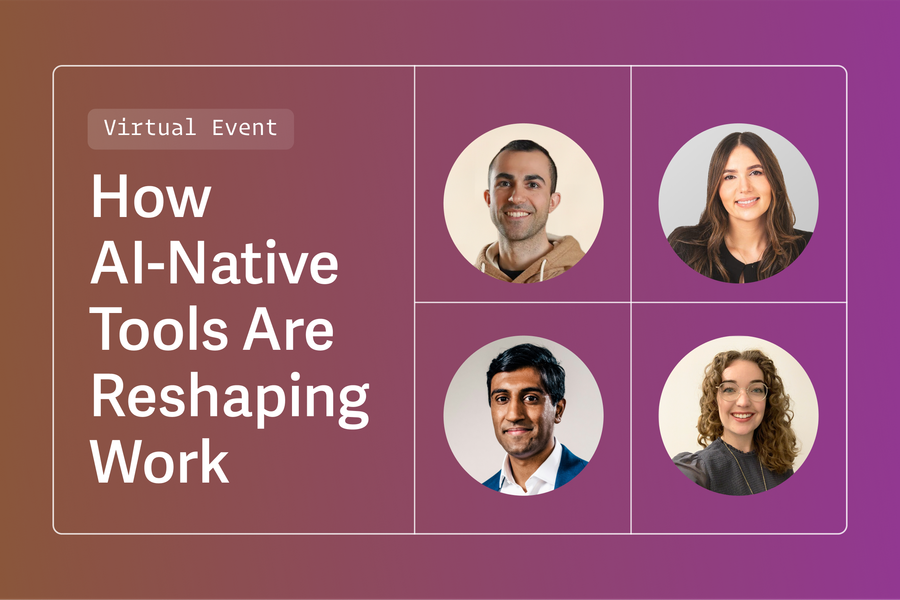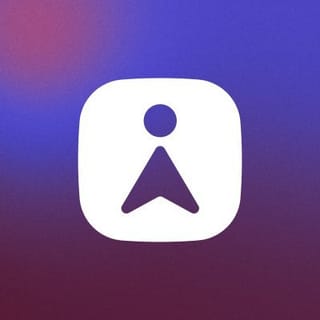
Most teams are stuck trying to retrofit AI into legacy systems. Winning teams are embracing AI-native culture and rethinking work from the ground up.
Laura Newton, Head of Core Product & Design at Superhuman, spoke with leaders building at the AI frontier: James Evans, Head of AI at Amplitude, Rohan Pavuluri, Chief Business Officer at Speechify, and Cristina Cordova, COO at Linear.
AI is not a faster widget. It's a watershed shift in work itself, inviting teams to evolve how they build and how they serve customers. The conversation explored how AI has changed business planning and roadmaps, how product teams can decide what to focus on, and how to ship AI features in a way that delights customers.
Here are the key questions and takeaways.
How has AI changed what your business can do?
Cristina highlighted shifts in productivity and collaboration. New AI engineering tools can augment development and debugging workflows, turning time-intensive tasks into something you can ship in minutes. That's a massive productivity unlock in core workflows.
AI is becoming a collaborative layer across different roles, "accelerating output while preserving quality and intentionality", said Cristina. With AI supporting and automating collaboration, people can spend more time on higher-leverage work.
AI gives non-technical team members more autonomy, too. At Linear, marketers can now draft and stage website updates that previously required hardcoding. Through AI agents, they trigger code reviews directly — maintaining developer oversight while removing engineering cycles and helping the whole team ship faster.
James described AI's value in terms of "unlimited time, not unlimited intelligence". The typical productivity bottleneck before AI was human bandwidth to use software effectively, not the software itself. AI now removes that bottleneck — teams manage and oversee, while software can spend practically unlimited human-equivalent hours initiating and producing work.
Rohan explained how AI empowers Speechify users to remix and refine content, shifting toward a more conversational relationship with the product. This saves time plus creates new value, allowing users to collaborate in making new product experiences. For example, students can quickly compile quizzes to test themselves, which involves search, collation, and coherence from multiple sources.
Takeaways:
- Give your team the best AI-native tools for productivity gains in your core workflows
- Increase non-technical teammates' autonomy while maintaining engineering oversight
- Consider the frame of AI as unlimited time, not unlimited intelligence
- Make your product more conversational to unlock value from existing features
How has AI impacted your vision, roadmaps, and what you focus on next?
In a world where groundbreaking models drop every other Tuesday, traditional product roadmaps feel outdated.
Rohan described "building for the edge of what the model can do". You need to focus on implied improvements and future capabilities, not just present technology. It's an approach that's helped Speechify stay ahead in areas like video generation, assistive audio, and multimodal content parsing.
Laura reflected that high optimism about improvements is almost mandatory — as a product team, you often need to "jump out of the plane and trust the technology will build the parachute on the way down". At Superhuman, those jumps have been rewarded by leading the market and overdelivering on what customers are asking for.
James described Amplitude's shift toward more prototyping. They prioritize adaptability, responsiveness, and experimentation with new capabilities. One feature they tested in January was nearly unusable. By March, thanks to model improvements, it showed real value.
Cristina noted that more and more ambitious user-requested features are becoming possible to build at a high quality standard. While AI model reliability and accuracy couldn't support quality implementation six months ago, the latest models can.
Takeaways:
- Build for the edge of what the model can do
- The traditional roadmap is dead. Long live the prototype
- Keep tabs on which user-requested features become much easier to prototype and test, thanks to new model capabilities
How do you decide what to build with AI? How do you prioritize?
Rohan said there's a constant balance to strike between incorporating new AI capabilities and maintaining a bar for quality user experiences. That's a good tension to have. It comes down to discernment and a commitment to incredible user experience.
James said Amplitude has seen changes in customer discovery. At first, customers didn't necessarily have the best intuitions about what AI was good at, and which features it might serve well. "If you ask people what they want, you'd often get answers like, 'We wish we had a crystal ball that could predict all the trends in our business and help us optimize decision-making.' That sounds great of course, but it's hard to build."
The disconnect between what customers want and what's actually buildable has made traditional discovery methods less reliable. This is another reason Amplitude has seen success with its shift to prototyping — by experimenting with what the present tech does really well, prototypes help users better understand and communicate what they actually want.
Linear has a north star for building with AI: reducing toil (rather than adding agency). Cristina said they focus on workflows that are low-leverage or prone to human delays — processes that benefit from consistency and scale, like triage and labeling. They tend to build in tight, contained loops and validate impact, rather than ship big releases, so that users experience the improvements as seamless augmentation. This helps Linear maintain product integrity while moving fast.
Laura mentioned the benefits of having a high-trust group of beta testers who are themselves pushing the edge of what's possible. When Superhuman was first testing and refining Ask AI — AI-powered search that can rapidly surface answers from your whole inbox — it was fascinating to see how users wished it would work. In particular scenarios they were prompting for full agent-like behaviours or interactions. That offered critical insight into use cases, which the Superhuman product team has a structured way of thinking about:
- On-demand: You choose to use it. Like Write with AI for drafting, editing, and translating messages.
- Always-on: You don't have to remember to use it. Like Auto-Summarize, and Auto Reminders & Auto Drafts.
- Agentic: It takes on complete workflows on your behalf. Like Auto Archive.
Laura noted that a framework like this can help teams prioritize AI features based on user behavior patterns, and set appropriate quality standards for each interaction type.
Takeaways:
- Don't neglect your team's standards for quality and user experience. That's a good place for tension and discernment
- Prototype more to help users understand what they really want from AI
- Aim for seamless, regular augmentation in your core product experience
- Cultivate your relationship with beta testers and map the frontier together
What's the biggest mistake you've seen teams making when adopting AI-native workflows?
Rohan said technical and non-technical team members need make the effort to understand each other better. When technological capabilities are advancing so fast, having a shared picture about what AI can and can't do helps teams make better decisions, faster.
Laura, Rohan, and Cristina talked about the danger of teams neglecting the human touch. Significant customer value and delight is maintained by keeping the right "human-in-the-loop" interactions in your AI workflows.
Takeaways:
- Support technical and non-technical teammates to align on what AI can and can't do
- Keep checkpoints in your workflows to maintain taste, craft, and the human touch
The new shape of work
This conversation revealed AI's profound impact on how we work. Beyond automating tasks, AI is dissolving traditional bottlenecks, empowering non-technical team members, and fundamentally changing the relationship between users and products.
The companies leading this transformation share a common thread: they're reimagining work itself, expanding what's possible for every team member.
The future of work
ICYMI: we're thrilled to join Grammarly to build the agentic future of work ✨
Superhuman is the most productive email experience ever made. Our customers get through their email twice as fast as before, reply 1–2 days sooner, and save more than 4 hours every single week.


